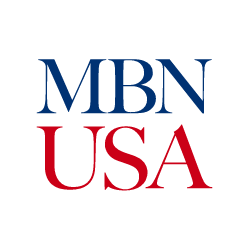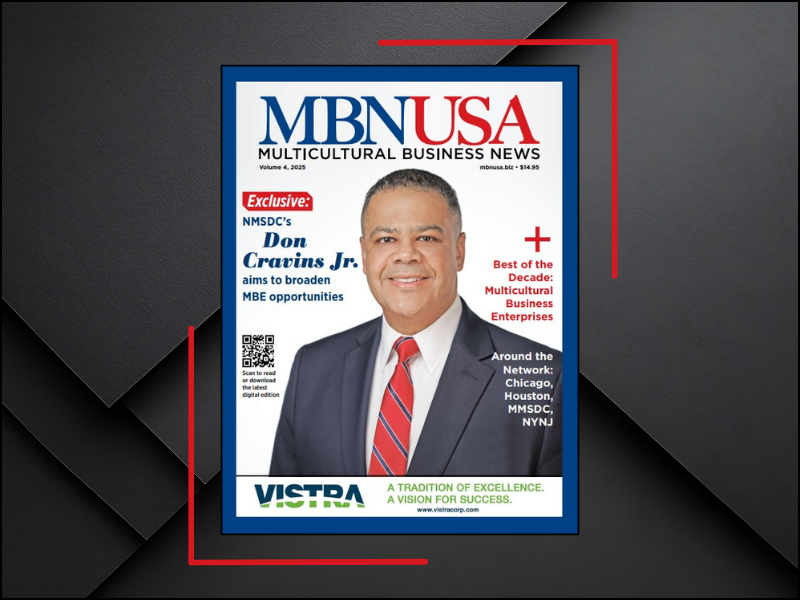By Zach Rinkins
What a difference a few decades make — and, not always for the better, as is the case with Black-owned banks in this country.
According to the Federal Reserve Bank of Chicago, in 1976, there were 50 Black-owned banks in the United States. Today, these federally designated minority depository institutions, or MDIs, have dwindled to 18. Mergers, acquisitions, and consolidations played a significant role in that 64% drop.
But a new generation of Black banking leaders is leveraging collective might to elevate this longtime niche market to unprecedented deposits, assets and success. They are shattering old business models and creating a new playbook for economic inclusion and prosperity.
“Consolidations are not just affecting Black banks. When I started in banking 55 years ago, there were more than 20,000 banks,” said Tom Nida, executive vice president and market executive for City First Broadway Bank. “Now, there are about 6,000. This continuing consolidation and acquisition of banks is a part of a national trend.”
The Federal Reserve calculates the collective assets and deposits of all Black-led MDIs at just shy of $7 billion. New York’s Carver Federal Savings Bank and Boston’s OneUnited Bank have been steadily competing to become the nation’s first Black bank to top $1 billion in assets for nearly 20 years.
During the past four years, New Orleans, Louisiana-based Liberty Bank and Trust Co. rose to the top of the mountain with more than $900 million in its robust coffers. Then, surprisingly, a Los Angeles MDI merged into its Washington, D.C. counterpart to cross the finish line and cash in on the coveted $1 billion milestone to form City First Broadway.
“Our two CEOs Brian E. Argrett [City First Bank] and Wayne Bradshaw [Broadway Federal] have known each other for years. In a conversation going back to 2019, they started talking about how it might happen if the two organizations came together,” Nida said. “The idea was to do it as a merger of equals so that there was an equal weight to the value.”
Winning the race
The recently announced merger combined Broadway Federal and City First Bank to become City First Broadway. The nation’s first Black-led MDI to reach $1 billion in assets. The new institution maintains bi-coastal headquarters and will continue to serve and expand in the banks’ current geographic areas — Washington D.C., and Los Angeles, California — with a desire to scale to other high-potential urban markets.
“The new combined institution strengthens our position and helps drive both sustainable economic growth and societal returns,” Broadway CEO Wayne Bradshaw said in a company release. “We envision building stronger profitability and creating a multiplier effect of capital availability for our customers and for the communities we serve.”
Coupling the two institutions has increased their collective commercial lending capacity for investments in affordable multifamily housing, small businesses, and nonprofit development in financially underserved urban areas while creating a national platform for impact investors.
“Generally speaking, in the acquisition game, the bigger bank assumes the smaller bank in the acquisition game,” Nida said. “In this case, both the organizations did different things in their respective markets that they probably would not have done outside of that market.
“This combination allowed us to bring the best pieces of both organizations and introduce them to both markets,” he continued. “Through this process, we wanted to create something that was greater than the sum of its parts.”
The new structure welcomes Broadway’s Bradshaw as board chairman and City First’s Argrett as vice chairman and CEO. The executive team blends the leaders from both banks. Four of the six executive vice presidents are Black women. Nida said the acquisition is an effective strategy for growth and expansion.
“Leveraging the combined successful track records of both banks allowed us to become eligible for additional capital from the [U.S.] Treasury Department,” he said. “If we were a startup, we’d have to go from scratch to raise a lot of capital and deploy a lot of the capital to build up staff and facilities and establish programs just to get started. Acquiring great partners gives you a head start.”
He added, “In my entire career, this is the first time I’ve participated in a true merger of equals. It was a lot of extra work. I liked the outcome a whole lot better than some of the previous acquisitions I was involved with.”
The bi-coastal juggernaut is not the only MDI acquiring other banks to deliver shareholder value and expand services.
Liberty Bank evolves into a regional empire
New Orleans’ Liberty Bank is a case study in evolution and efficiency. It was initially founded in 1972 and started with roughly $2 million from a coalition of multicultural depositors. Over the next 50 years, the Bayou-headquartered financial institution implemented an aggressive acquisition strategy.
It grew into one of the nation’s largest Black-owned MDIs and one of the few Black-owned banks to operate in multiple states. Liberty’s appetite for acquisitions started when it bought Corpus Christi Federal Credit Union in 1992. The transaction was heralded as the first-ever whole-bank credit union purchase by a commercial bank.
“Anything that makes banking easy and more convenient for our customers is very important to us. By obtaining other banks, we increase our capacity to compete with larger institutions,” said Liberty Bank President and CEO Alden McDonald Jr. in a company release.
Liberty Bank has either merged or acquired Black-owned and nonminority-owned financial institutions through the years. The dynamic company acquired Big Easy neighbors Carrollton Homestead Association F.A. in 1993 and United Bank and Trust Co. in 2009; Life Federal Savings Bank in Baton Rouge in 1994; First American Bank in Jackson, Mississippi, in 2003; Douglass National Bank in Kansas City, Kansas, and Kansas City, Missouri, in 2008; Home Federal Savings Bank in Detroit in 2009; Covenant Bank in Chicago in 2013; Alabama’s First Tuskegee Bank with branches in Tuskegee and Montgomery in 2015; Metro Bank in Louisville, Kentucky, in 2020; and Tri-State Bank in Memphis in 2021. In 2007, the bank acquired SDI Mortgage, a Houston-based mortgage and loan company.
“The expansion of our banking network is a significant benchmark in our development. We want to broaden our reach and provide our services to a larger audience,” said McDonald in a bank release. “We saw the need to have a diverse and expansive portfolio and geographical reach. These acquisitions are another step to be more aggressive on a national stage.”
These deliberate and profitable moves have allowed the Crescent City conglomerate to diversify its product offerings and grow its assets to $926 million. It has also become one of the nation’s largest Black-owned banks with branches in Alabama, Illinois, Kansas, Kentucky, Louisiana, Michigan, Mississippi, Missouri, Texas and Tennessee.
OneUnited serves more than 100,000 customers; leverages national multimedia campaigns
The institution formerly known as the Boston Bank of Commerce demonstrates the value of leveraging innovation, acquisitions, and marketing to create a competitive advantage in the banking landscape. Since purchasing the controlling stake in its predecessor bank in 1996, entrepreneurs Kevin Cohee, chairman and CEO, and Teri Williams, president and chief operating officer, have expanded the rebranded
OneUnited Bank by acquiring Miami’s Peoples National Bank of Commerce in 1999, along with two Los Angeles-based institutions: Founders National Bank in 2001and Family Savings Bank in 2002, both based in Los Angeles.
“Although majority Black, we serve a diverse customer base. We started to invest in technology and have had an online bank since 2006, the first Black bank to offer digital banking. At that time, many large community banks didn’t have an online or social media presence. They had not figured out how to do it,” Williams said.
OneUnited executives have transformed an underperforming $56 million depository into a $650 million financial powerhouse that has consistently ranked as one of the country’s top three largest Black-owned banks since Cohee and Williams assumed leadership 27 years ago. It’s not unusual to see Williams and other bank leaders commenting on financial issues on national media outlets that cater to its target market.
“We have learned it’s really important to provide services that people need and not have an arrogant attitude about banking,” Williams said. “Banking has historically been very arrogant. It seemed banks had this attitude that we have the money and here are our products and services — deal with it.”
Research from Pew Research Center notes that Black people are more likely to consume social media content than any of their racial counterparts. According to a Nielsen Electronic Mobile Measurement, U.S. Black millennials watched 73% more YouTube per person than the general population of the same age.
OneUnited appears to market its bank more effectively than its leading Black-owned counterparts. For example, its Facebook page has 240,139 followers versus Liberty Bank and City First Broadway’s combined 5,163 followers. The firm’s YouTube page has 3,220 subscribers versus Liberty’s 538 subscribers. At press time, City First did not have a YouTube page. Williams concedes the bank’s approach is unconventional when compared to its peers.
“We do not see ourselves as traditional banking marketers. We take lessons from the media and entertainment industries to make banking and focusing on your money fun,” Williams said. “It doesn’t all have to be boring.”
OneUnited’s innovative promotional strategies include its inaugural One Transaction
Virtual Financial Conference, an annual “I Got Bank!” youth financial literacy essay competition and the commissioning of a controversial 550-square foot mural “Thunder &
Enlightening” on the facade of its Miami branch. Other initiatives include offering financial products and Visa debit cards with powerful art that reflects Black pride and highlight cultural icons like Harriet Tubman. The bank recently purchased a From Paris with Love nonfungible token, or NFT, created by internationally acclaimed artist Addonis Parker, which pays tribute to renowned entertainer and civil rights activist Josephine Baker. He also created the Miami mural and the art for the bank’s debit cards.
“We use social media to get the word out. We’re about to introduce the OneTransaction podcast because we see that as an opportunity to reach our customers and our community,” Williams said. “We see ourselves as storytellers that are trying to engage our community and help people build wealth.”
Those strategies helped OneUnited attract over 100,000 customers and, reportedly, achieve a compound growth rate on its common equity of over 35%. If these trends persist, a few more Black-owned MDIs will join the coveted billion-dollar club in the coming years.
To learn more about CityFirstBroadway, visit cityfirstbroadway.com.
To learn more about Liberty Bank & Trust, visit libertybank.net.
To learn more about OneUnited, visit oneunited.com.
To learn more about MDI and community development financial institution bank headquarters and branches, visit Federal Deposit Insurance Corp.
Tags:
Federal Reserve Bank of Chicago Black-owned banks in the United States MDIs Tom Nida New York’s Carver Federal Savings Bank Boston’s OneUnited Bank New Orleans Louisiana-based Liberty Bank and Trust Co Los Angeles Brian E. Argrett Wayne Bradshaw California U.S MDI New Orleans’ Liberty Bank Corpus Christi Federal Credit Union Alden McDonald Jr F.A United Bank and Trust Co First American Bank in Jackson Douglass National Bank in Kansas City Missouri Home Federal Savings Bank in Detroit Covenant Bank in Chicago Metro Bank in Louisville Kentucky Tri-State Bank in Memphis Houston-based mortgage and loan company. bank acquired SDI Mortgage conglomerate Illinois Michigan Mississippi Texas Tennessee Kevin Cohee Teri Williams Miami’s Peoples National Bank Founders National Bank Family Savings Bank Harriet Tubman NFT Addonis Parker Josephine Baker Broadway Bank Washington D.C. Broadway Federal and City First Bank Federal Savings Bank in Baton Rouge Alabama’s First Tuskegee Bank with branches in Tuskegee and Montgomery


-139.png)
-910.png)
-960.png)



